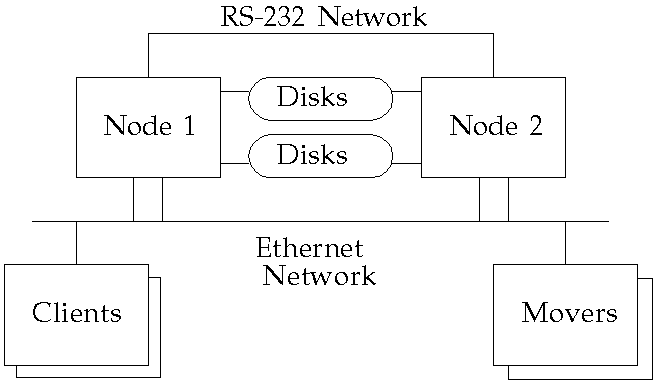1. Overview
The High Availability (HA) feature of application allows a properly configured application system to automatically recover from a number of possible failures, with the goal of eliminating all single points of failure in the system. The same functionality can be used to minimize the impact of regularly scheduled maintenance and/or software upgrades.
 The High Availability feature is only available on AIX platforms.
The High Availability feature is only available on AIX platforms.
Failures of the following components will be protected against when using a properly configured HA application system:
- Core server
- Network-related
- adapters
- cables
- Disk-related
- adapters
- cables
- disks
- Power-related
- node power supply
- disk power supply
- power distribution strip
High availability is not the same as fault tolerance. The failures above are “protected against” from the standpoint that the HA application system will be able to return to an operational state without intervention when any one of the above failures occur. There certainly may be some down-time, especially when the core server fails (crashes).
After a recovery, application will function properly, but it will no longer be in a Highly Available state. A subsequent failure may not be recoverable. For instance, if the core server crashes and the backup takes over, there is no longer a backup node. It will be necessary to correct the original failure in order to return the system to a Highly Available state.
1.1 Architecture
The following diagram shows the necessary components for an HA application configuration:
Figure G-1 HA application Architecture
This diagram does not include the power system, but it does have several features that are very important:
- At any point in time, either Node 1 or Node 2 can act as the core application server.
- The two shared disk busses are mirrored to one another and accessed by each node using separate adapter cards so that any single failure (disk, adapter, or bus) will result in accessibility of at least one good copy of the data.
- Each node has two connections to the ethernet network. One is a “standby” that can take over the IP and hardware addresses of the primary adapter in case of failure.
- There is an RS-232 serial cable connecting Node 1 and Node 2 to enable communication even in the event that the main network fails.
